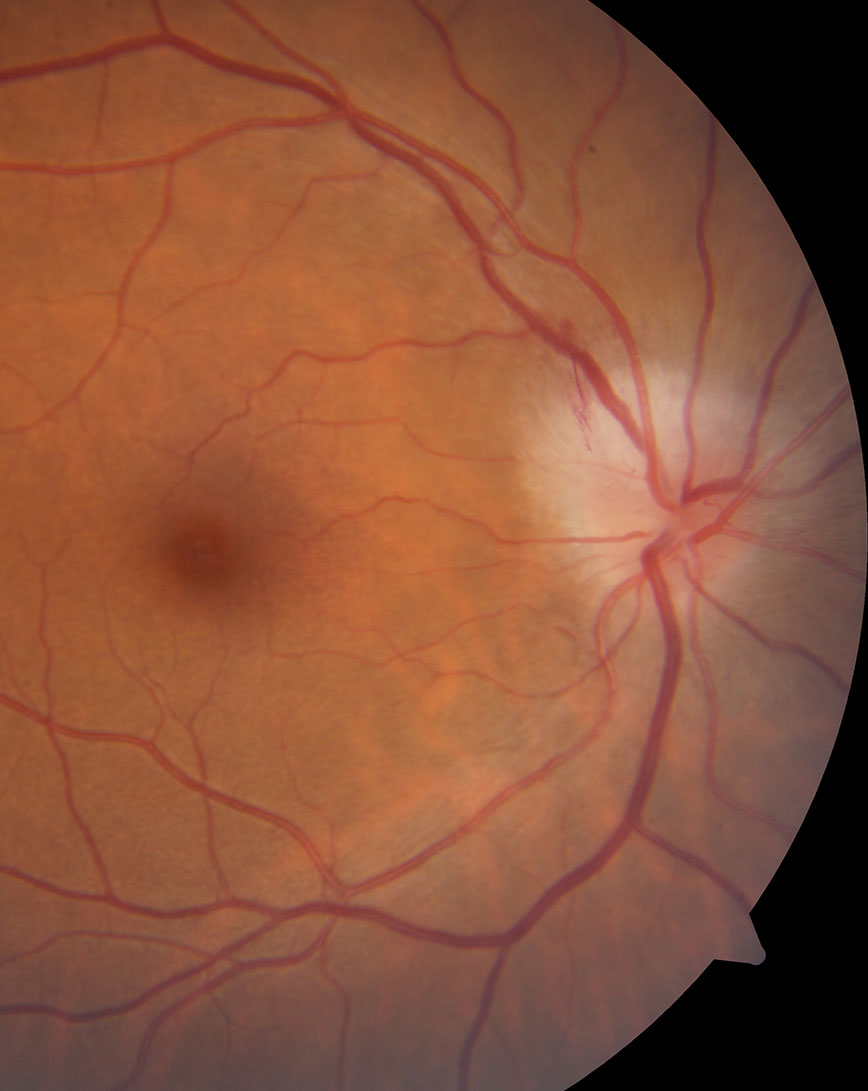 |
| Baseline acuity was the only predictor of long-term VA in idiopathic or MS-associated optic neuritis. Photo: Nate Lighthizer, OD. Click image to enlarge. |
Recent findings suggest that patients with idiopathic or multiple sclerosis (MS)-associated optic neuritis with baseline high-contrast visual acuity (HCVA) better than count fingers have good long-term outcomes. This study also found that the only predictor of long-term acuity was baseline HCVA.
The researchers performed a retrospective, longitudinal, observational study assessing 135 episodes of idiopathic or MS-associated optic neuritis among 118 patients who were diagnosed by a neuro-ophthalmologist within 30 days of onset.
The primary outcome measured in this analysis was HCVA at six to 18 months. Additionally, multiple linear regression models of 107 episodes from 93 patients examined the association between HCVA at six to 18 months and the following factors: age, sex, race, pain, optic disc swelling, symptoms, viral illness prodrome, MS status, high-dose glucocorticoid treatment and baseline HCVA.
Of the 135 acute episodes evaluated in this study, the median age at presentation was 39 years, 91 (67.4%) were women and 112 (83.0%) were non-Hispanic Caucasians. The study authors reported that 101 (75.9%) had pain, 33 (24.4%) had disc edema, eight (5.9%) had a viral prodrome, 66 (48.9%) had MS and 62 (46.6%) received glucocorticoids.
Data showed a median time between symptom onset and diagnosis of six days. The investigators observed a median HCVA of 20/50 (20/22, 20/200) at baseline and 20/20 (20/20, 20/27) at six to 18 months. Additionally, they reported that 62 (45.9%) had better than 20/40 at baseline and 117 (86.7%) had better than 20/40 at six to 18 months.
Linear regression models, which included 107 episodes in 93 patients with baseline HCVA better than count fingers, found that only baseline acuity was correlated with long-term HCVA.
In this modern cohort of idiopathic or MS-associated optic neuritis patients with baseline HCVA better than count fingers, long-term HCVA was good overall, the study authors concluded in their recent Journal of Neuro-Ophthalmology paper.
“Uncertainty about patients with an HCVA of count fingers or worse remains, and thus, further investigation is needed,” they noted. “These findings are consistent with our prior study using Optic Neuritis Treatment Trial data. Therefore, this information can be integrated into clinical practice and guide discussions about long-term visual prognosis with patients.”
Jarocki A, Benard-Seguin E, Gonzalez LA, et al. Predictors of long-term visual acuity in a modern cohort of patients with acute idiopathic and multiple sclerosis-associated optic neuritis. J Neuroophthalmol. May 18, 2023. [Epub ahead of print]. |

